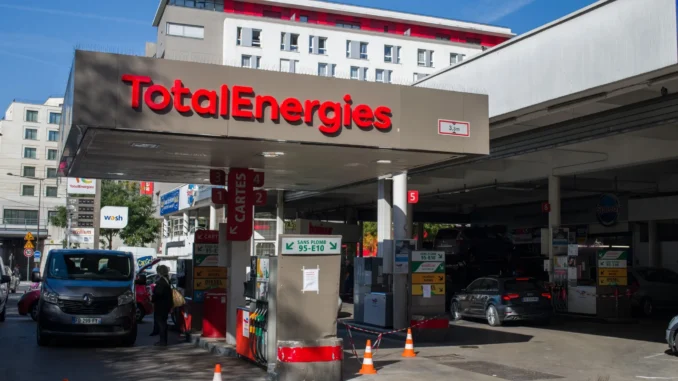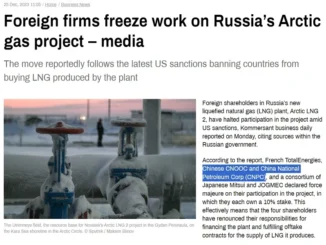
As the European Union and its allies intensify sanctions against Russia amid the ongoing conflict in Ukraine, the continent’s energy landscape is undergoing a profound transformation. Europe’s diesel and jet fuel imports are surging toward record levels this October 2025, driven by preparations for winter demand and the impending clampdown on Russian petroleum products.
Traders are stockpiling supplies, pushing monthly import volumes to unprecedented highs, while diesel prices in key markets like Germany have climbed in response to the latest restrictions.
This shift highlights the broader ripple effects of geopolitical tensions on global energy markets, forcing Europe to diversify away from its former reliance on Russian fuels.
The Latest Sanctions: A Tightening Grip on Russian Energy
The newest wave of sanctions, rolled out in late October 2025, represents a significant escalation in Western efforts to curb Russia’s war funding through its energy sector. On October 23, the EU adopted its 19th sanctions package, which includes a total ban on Russian liquefied natural gas (LNG) imports starting January 1, 2027, for long-term contracts.
This measure targets key sectors like energy, finance, and crypto providers, aiming to starve Russia’s economy of revenue. Concurrently, the United States imposed sanctions on major Russian oil companies Rosneft and Lukoil on October 22, affecting over 5% of global oil output and disrupting overseas projects.
These actions, described by the U.S. Treasury as a call for an immediate ceasefire, are expected to reshape oil flows to markets like China and India, potentially causing short-term disruptions.
The immediate market impact has been palpable. Global diesel markets, already strained, are heating up further as the EU’s sanctions reshape trade patterns for the second time since 2022.
In Europe, imports of U.S. diesel to northern Germany hit record highs this month, contributing to rising futures prices.
Analysts predict these measures will accelerate the phase-out of Russian oil products, with a full ban on imports refined from Russian crude set for early 2026.
While the sanctions aim to pressure Moscow, they also risk elevating energy costs for European consumers during a critical heating season.
Sanctions’ Unexpected Effect on Russian GDP
Contrary to initial Western expectations, the barrage of sanctions since 2022 has not crippled Russia’s economy as severely as anticipated. After a contraction in 2022, Russia’s GDP rebounded sharply, posting growth of over 4% in both 2023 and 2024.
This resilience stems from a war-driven economy, bolstered by high military spending, parallel imports, and redirected energy exports to non-Western markets like Asia. For 2024, GDP growth stood at 4.3%, fueled by these adaptations.
However, cracks are emerging. Forecasts for 2025 have been slashed, with growth now projected at just 1.2% or less, down from earlier estimates of 2.5%.
Russia’s central bank has revised its outlook amid slowing industrial production and persistent inflation, signaling a potential slide toward stagnation.
The national debt-to-GDP ratio remains low at around 17.7% by year-end 2025, providing some fiscal stability, but experts warn that sustained sanctions could exacerbate long-term challenges like workforce shortages and technological isolation.
In essence, while sanctions have forced economic restructuring, Russia’s “Fortress Economy” has adapted better than predicted—though the latest measures may test its limits further.
Ukrainian Strikes on Russian Refineries: Adding Fuel to the Fire
Compounding the sanctions’ effects are Ukraine’s targeted drone strikes on Russian refineries, which have inflicted substantial damage on Moscow’s energy infrastructure. As of October 2025, Ukrainian President Volodymyr Zelenskyy reports that these long-range attacks have reduced Russia’s oil refining capacity by 20%.
The campaign peaked in August 2025 with strikes on 14 refineries, followed by eight in September, leading to fuel shortages within Russia and a 13% drop in oil product exports month-on-month.
These “kinetic sanctions,” as some analysts dub them, have disrupted Russia’s ability to process and export refined products, tightening global diesel supplies.
The attacks have caused immediate production losses, infrastructural damage, and higher repair costs, indirectly benefiting Ukraine by undercutting Russia’s war funding.
On the global stage, this has contributed to elevated oil prices and market volatility, with some economists noting potential upward pressure on pump prices worldwide due to reduced Russian output.
While not catastrophic—estimates suggest damage to about 38% of capacity may be overstated—the strikes have forced Russia to prioritize domestic supply over exports, further straining international markets.
Europe’s Shifting Import Landscape for Gasoline and Diesel
Europe’s pivot away from Russian fuels has dramatically altered its import sources for gasoline and diesel. In 2022, Russia supplied nearly 30 million metric tons of diesel to Europe, accounting for a dominant share; by 2024, this had plummeted to just 2.9 million tons, dropping Russia’s portion to under 1% of seaborne imports.
To fill the gap, Europe has turned to alternative suppliers, with the United States emerging as a key player, providing record volumes of diesel this year.
India has also ramped up exports, hitting all-time highs in recent months as refiners process cheaper Russian crude for resale to Europe.
For crude oil—a feedstock for domestic refining— the U.S. accounted for 21% of Europe’s imports in 2024, followed by Norway, Kazakhstan, and other Commonwealth of Independent States countries.
Natural gas imports tell a similar story of diversification: Norway leads with over 33% in 2024, trailed by the U.S., Algeria, Qatar, and the UK.
LNG imports in the first half of 2025 were dominated by the U.S. at 55%, with Russia still holding 16%—a figure set to decline under new bans.
This reconfiguration has boosted transatlantic and Asian trade but exposed Europe to new vulnerabilities, such as potential overreliance on U.S. supplies.
The Bottom Line:
As sanctions and strikes converge to disrupt Russian energy dominance, Europe is bracing for a winter of high imports and elevated prices. While Russia’s economy has shown remarkable adaptability, the cumulative pressures may finally tip the scales, reshaping global energy dynamics for years to come.
Energy Security starts at home, and it appears that the Net Zero crowd in the EU has forgotten that.
Got Questions on investing in oil and gas?
ENB Top News
ENB
Energy Dashboard
ENB Podcast
ENB Substack






Be the first to comment